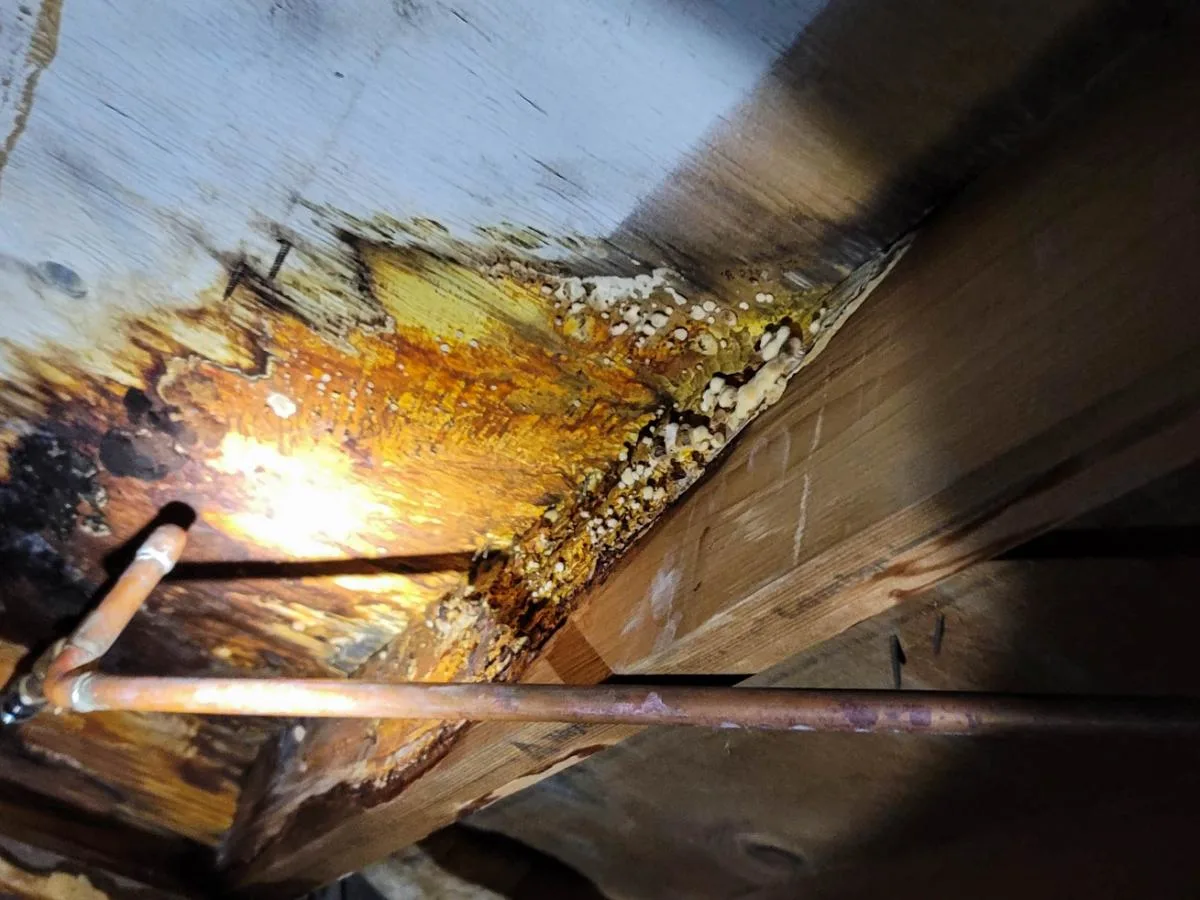As a homeowner, I always make it a habit to inspect my crawl space every few months.
Once, while cleaning, I found a dark substance on my crawl space door, a musty, stain-like matter that should never have been there: mold.
If you discovered a similarly sneaky problem spreading throughout your crawl space, or any parts of your home, then you should definitely keep reading.
Below, I’ll share everything about what causes mold infestations, their dangers, and how to prevent them.
Black Discoloration In Crawl Space?
Crawl spaces have plenty of practical uses.
For one, if you live in an area prone to flooding, these hollow gaps allow water to pass and prevent serious damage to your home.
Yet, crawl spaces aren’t impervious to damage either.
That’s why every homeowner should conduct regular inspections, and look for signs of pests, cracks, moisture, or other issues that could result in long-term problems.
If you notice black stains or spots in any area of your crawl space, you may be looking at the onset of a mold or mildew infestation.
You’d want to act fast and resolve the musty problem promptly before it breeds more headaches that could engender your health and your home’s integrity.
Are Molds Dangerous?
Besides compromising the building’s foundation, mold presence may also cause health concerns for you and your family.
These fungi spread by releasing tiny, invisible spores. When the spores land on any damp surface, they’ll grow and reproduce by creating more spores.
When floating indoors and inhaled, mold spores can become allergens or irritants that trigger allergic reactions in some people.
Some rare types of mold may even produce toxic substances called mycotoxins and cause adverse health effects.
Common signs of mold irritations include frequent sneezing, runny nose, skin rashes, and redding eyes. People suffering from respiratory illnesses, such as asthma, are most at risk.
What Causes Mold Growth In Crawl Spaces?
Excessive moisture is the leading culprit for mold infestations. That’s why places that are often or constantly damp, like your toilet, can be challenging to keep free of mold.
If you have plumbing leaks directing water to your basement or your crawl space has recently been flooded, there’s a high chance mold can grow and invade.
Crawl spaces or basements with organic material, such as wood, can also easily become a target for mold when exposed to moisture.
Most fungi need a certain temperature range to survive.
Unfortunately, molds grow very well in temperatures that humans are comfortable in – like inside your home. They grow best at temperatures between 77° F and 86° F, especially when the climate is humid.
How Can You Get Rid of Mold?
There are four requirements for mold to grow: spores, moisture, food, and temperature.
Remove any of these required conditions, and you can prevent mold from spreading in your crawl space—or any parts of your home.
Clean Affected Surfaces
First things first. You want to clean all the mold-affected areas.
If the size of the problem doesn’t exceed 10 square feet (or roughly a 3 ft. by 3 ft. patch), you can safely remove the mold by yourself.
For wider patches or more severe cases of mold, I’d recommend hiring an experienced contractor to do the cleanup.
When cleaning mold, remember to wear protective gear such as gloves, goggles, and an N-95 respirator.
Using hot water and soap, scrub all the affected areas with a stiff brush. Once cleaned, collect the dirty water with a sponge or wet vacuum and allow the area to dry thoroughly.
Disinfect the once-infested surface using a mixture of household chlorine bleach and water.
Repair Water Damages and Leaks
To prevent mold from resurfacing, repair any leaks or plumbing issues causing moisture to seep into your crawl space.
Also, if you’re using the crawl space as extra storage, remove anything porous or moisture-absorbent like carpets or tiles.
Keep your crawl space as dry as possible after the cleanup. I recommend using a dehumidifier to eliminate stagnant dampness or a fan to send the moisture outside.
Final Thoughts
There you have it. Black substances, spots, or stains, in the doors or walls of a crawl space typically spell a mold problem.
Now that you know what they are and what to do, waiting too long to take action is a mistake. Eliminate the musty problem promptly to avoid more costly future repairs!
Ben has a bachelor’s degree in construction engineering. When not constructing or remodeling X-Ray Rooms, Cardiovascular Labs, and Pharmacies, you can find him at home with wife and two daughters. Outside of family, He loves grilling and barbequing on his Big Green Egg and Blackstone Griddle, as well as working on projects around the house.
--
If you want more backyard tips including recipes, how-tos and more, make sure you subscribe to my youtube channel

